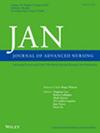遏制潮流:解决农村和北部医疗保健的保留和减员挑战,以维持加拿大的护理人员队伍。
IF 3.4
3区 医学
Q1 NURSING
引用次数: 0
摘要
目的:本研究旨在调查在COVID-19大流行加剧护理短缺的背景下,影响护士保留和减员的关键因素,重点从现任和前任护士的角度进行调查。设计本描述性横断面研究旨在探讨安大略省西北部农村和北部学术医院护士保留和流失的复杂动态。方法对在职护士和离职护士进行在线调查,比较不打算离职的护士、考虑在未来一年内离职的护士和在过去5年内减少工作时间的护士的观点。结果在288名受访者中,47%表示无意离职,17%表示已经离职。人员流失的主要原因包括工作量过大、难以保持健康的工作与生活平衡以及对管理做法和组织支持的不满。受访者建议提高领导效率,增加人员配备水平,实施以保留为重点的举措,以提高工作满意度和减少人员流失。结论:本研究强调了为留住护理人员而量身定制的战略干预措施的迫切需要,特别是在已经面临重大招聘和留住挑战的农村和北部社区。通过解决工作量压力,提高工作与生活的平衡,加强领导和提供保留措施,医疗保健组织可以提高工作满意度并减少人员流失。系统层面的变革对于为护理专业人员创造可持续和支持性的环境至关重要。影响调查结果强调,迫切需要立即采取行动,解决农村和北部卫生保健机构的护理危机。他们强调了旨在改善人员配备水平、领导实践和整体工作条件的系统干预措施的重要性,以保障这些服务不足地区护理工作的未来。病人或公众捐款:没有病人或公众捐款。对专业和/或患者护理的影响本研究将通过提供来自农村和北方学术界的独特视角,对现有关于护理人员保留和减员水平的文献做出贡献。研究结果可能有助于指导医院管理者制定有针对性的战略,以提高其组织内的护士保留率。通过优先考虑护士满意度,这些努力将促进积极的护患互动,并改善整体护理结果。报告方法本研究按照STROBE指南进行报告。本文章由计算机程序翻译,如有差异,请以英文原文为准。
Stemming the Tide: Tackling Retention and Attrition Challenges in Rural and Northern Healthcare to Sustain Canada's Nursing Workforce.
AIM
This study was an investigation of the key factors influencing nurse retention and attrition focusing on the perspectives of current and former nurses within the context of the ongoing nursing shortage exacerbated by the COVID-19 pandemic.
DESIGN
This descriptive, cross-sectional study was designed to explore the complex dynamics of nurse retention and attrition in a rural and northern academic hospital in northwestern Ontario.
METHODS
An online survey was administered to current and former nurses to compare the perspectives of those with no intention of leaving the organisation, those contemplating departure within the next year, and those who had reduced their work hours in the past 5 years.
RESULTS
Of the 288 respondents, 47% indicated no intention to leave and 17% reported having already left the organisation. The primary reasons for attrition included excessive workload demands, challenges maintaining a healthy work-life balance and dissatisfaction with management practices and organisational support. Respondents recommended improving leadership effectiveness, increasing staffing levels and implementing retention-focused initiatives to enhance job satisfaction and reduce turnover.
CONCLUSION
This study underscored the urgent need for strategic interventions tailored to retain nursing staff, particularly in rural and northern communities already facing significant recruitment and retention challenges. By addressing workload pressures, enhancing work-life balance, strengthening leadership and offering retention initiatives, health care organisations can improve job satisfaction and reduce attrition. System-level changes are essential to creating a sustainable and supportive environment for nursing professionals.
IMPACT
The findings highlight the critical need for immediate action to address the nursing crisis in rural and northern health care settings. They emphasise the importance of systemic interventions aimed at improving staffing levels, leadership practices and overall work conditions to safeguard the future of nursing in these underserved regions.
PATIENT OR PUBLIC CONTRIBUTION
No patient or public contribution.
IMPLICATIONS FOR THE PROFESSION AND/OR PATIENT CARE
This research will contribute to the extant literature on the retention and attrition levels of nursing by offering a unique perspective from a rural and northern academ. The findings may help to guide hospital administrators to develop targeted strategies to enhance nurse retention rates within their organisations. By prioritising nurse satisfaction, these efforts will foster positive nurse-patient interactions and improve overall care outcomes.
REPORTING METHOD
This study is reported according to STROBE guidelines.
求助全文
通过发布文献求助,成功后即可免费获取论文全文。
去求助
来源期刊
CiteScore
6.40
自引率
7.90%
发文量
369
审稿时长
3 months
期刊介绍:
The Journal of Advanced Nursing (JAN) contributes to the advancement of evidence-based nursing, midwifery and healthcare by disseminating high quality research and scholarship of contemporary relevance and with potential to advance knowledge for practice, education, management or policy.
All JAN papers are required to have a sound scientific, evidential, theoretical or philosophical base and to be critical, questioning and scholarly in approach. As an international journal, JAN promotes diversity of research and scholarship in terms of culture, paradigm and healthcare context. For JAN’s worldwide readership, authors are expected to make clear the wider international relevance of their work and to demonstrate sensitivity to cultural considerations and differences.

 求助内容:
求助内容: 应助结果提醒方式:
应助结果提醒方式:


